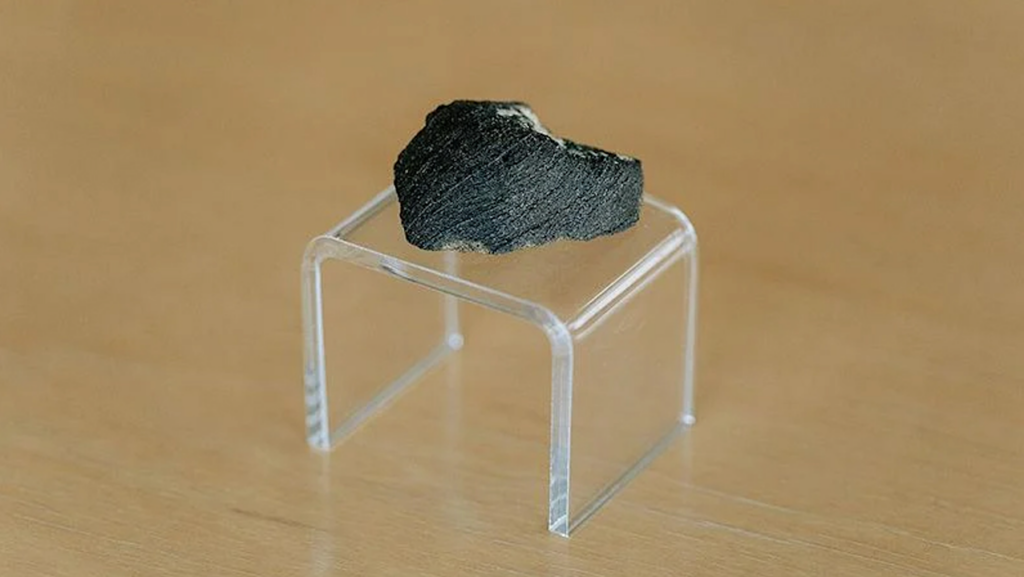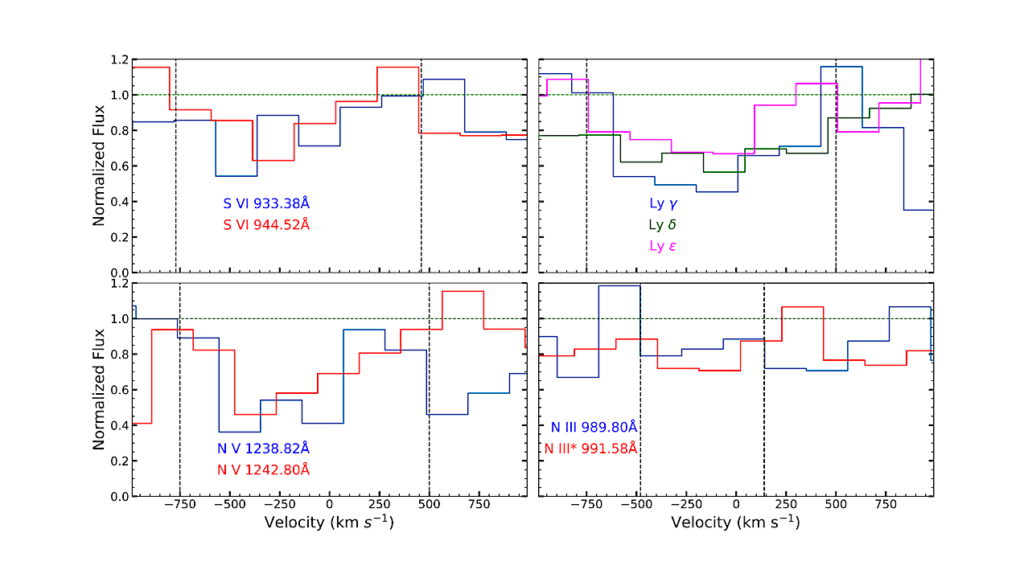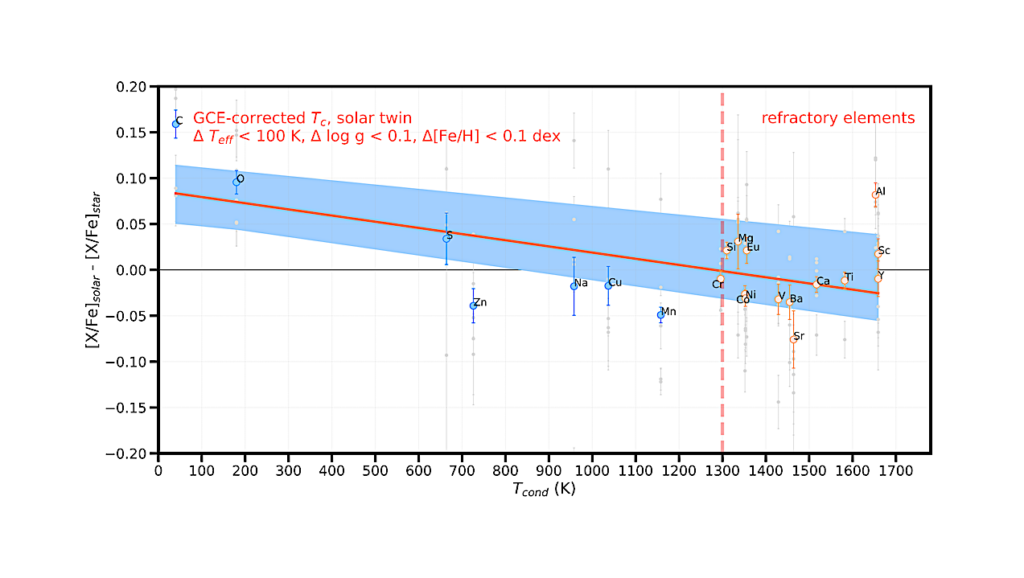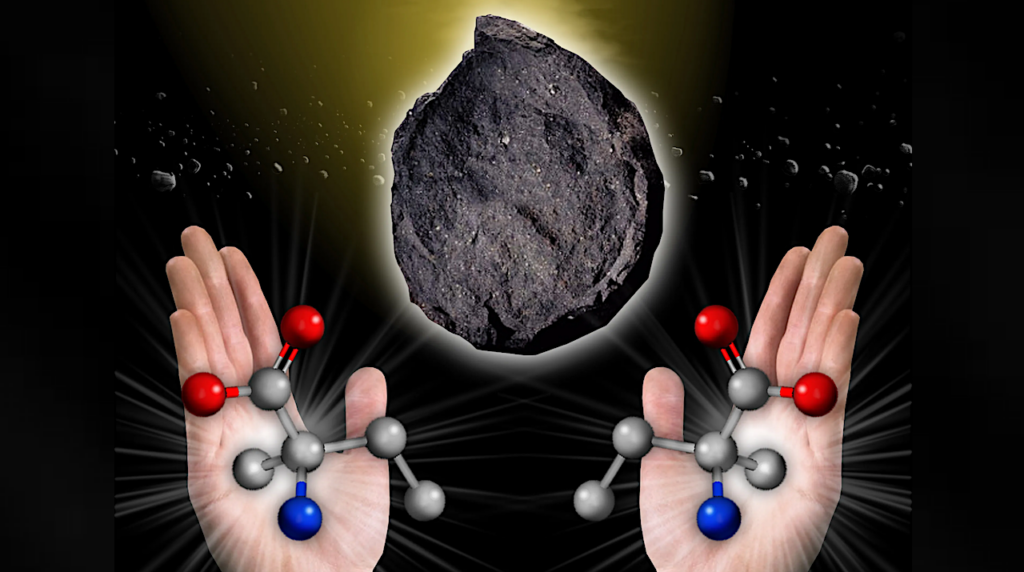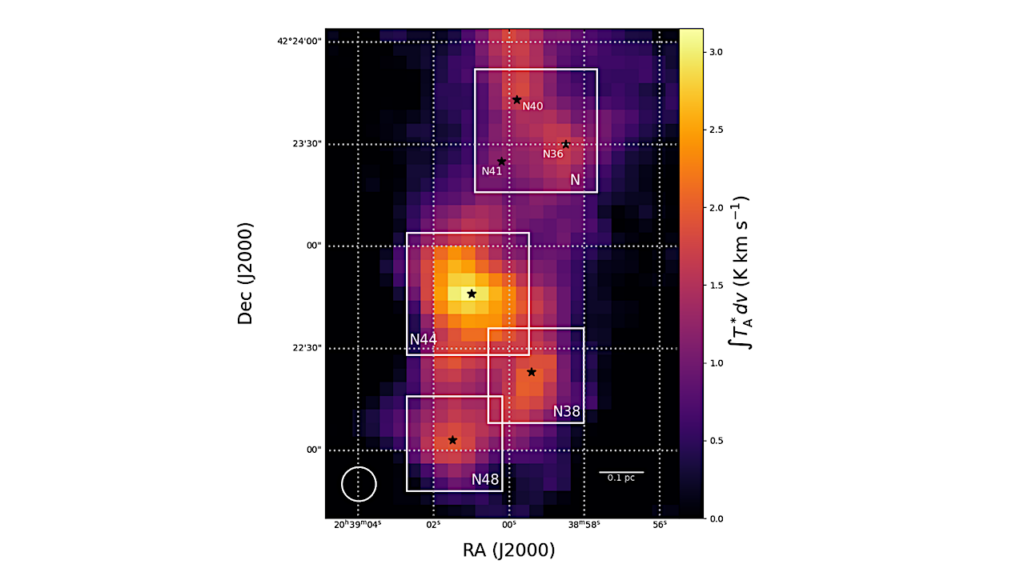Close-in Ice Lines And The Super-stellar C/O ratio In Discs Around Very Low-mass Stars
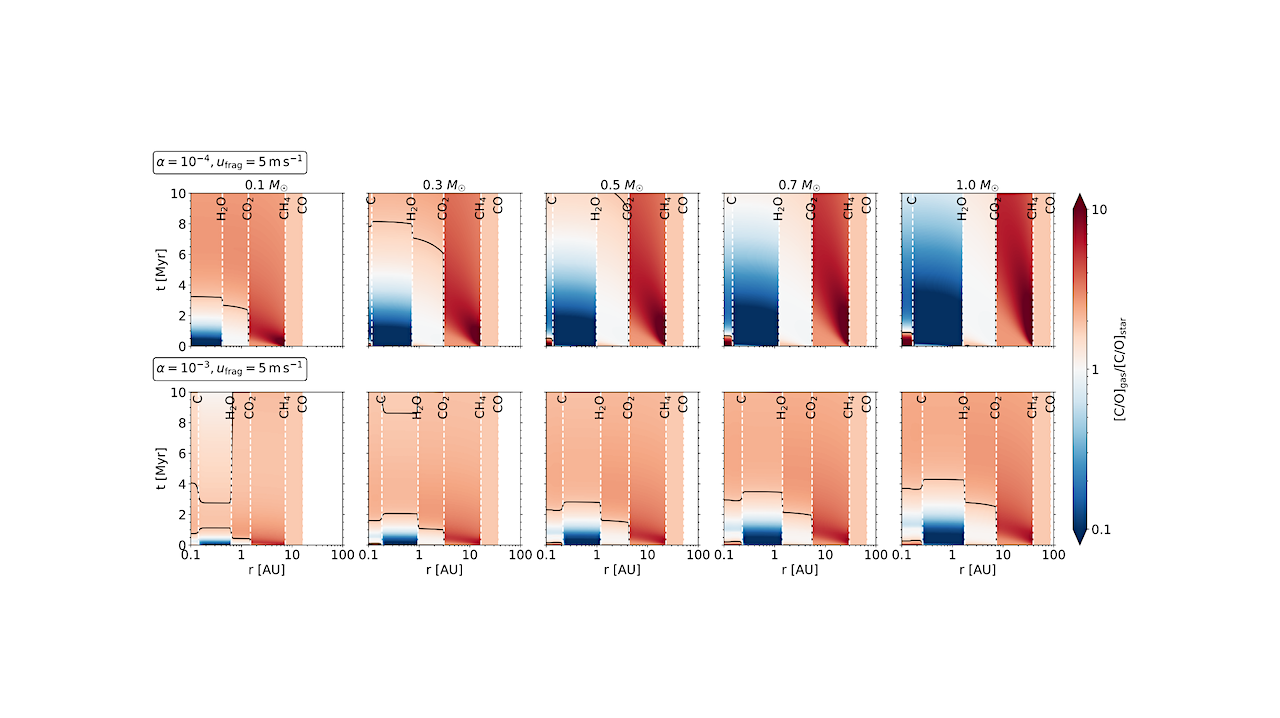
The origin of the elevated C/O ratios in discs around late M dwarfs compared to discs around solar-type stars is not well understood. Here we endeavour to reproduce the observed differences in the disc C/O ratios as a function of stellar mass using a viscosity-driven disc evolution model and study the corresponding atmospheric composition of planets that grow inside the water-ice line in these discs.
We carried out simulations using a coupled disc evolution and planet formation code that includes pebble drift and evaporation. We used a chemical partitioning model for the dust composition in the disc midplane. Inside the water-ice line, the disc’s C/O ratio initially decreases to sub-stellar due to the inward drift and evaporation of water-ice-rich pebbles before increasing again to super-stellar values due to the inward diffusion of carbon-rich vapour.
We show that this process is more efficient for very low-mass stars compared to solar-type stars due to the closer-in ice lines and shorter disc viscous timescales. In high-viscosity discs, the transition from sub-stellar to super-stellar takes place faster due to the fast inward advection of carbon-rich gas. Our results suggest that planets accreting their atmospheres early (when the disc C/O is still sub-stellar) will have low atmospheric C/O ratios, while planets that accrete their atmospheres late (when the disc C/O has become super-stellar) can obtain high C/O ratios.
Our model predictions are consistent with observations, under the assumption that all stars have the same metallicity and chemical composition, and that the vertical mixing timescales in the inner disc are much shorter than the radial advection timescales. This further strengthens the case for considering stellar abundances alongside disc evolution in future studies that aim to link planet (atmospheric) composition to disc composition.
J. Mah, B. Bitsch, I. Pascucci, T. Henning
Comments: Accepted for publication in A&A
Subjects: Earth and Planetary Astrophysics (astro-ph.EP); Solar and Stellar Astrophysics (astro-ph.SR)
Cite as: arXiv:2308.15128 [astro-ph.EP] (or arXiv:2308.15128v1 [astro-ph.EP] for this version)
Submission history
From: Jingyi Mah
[v1] Tue, 29 Aug 2023 08:53:31 UTC (817 KB)
https://arxiv.org/abs/2308.15128
Astrobiology,


